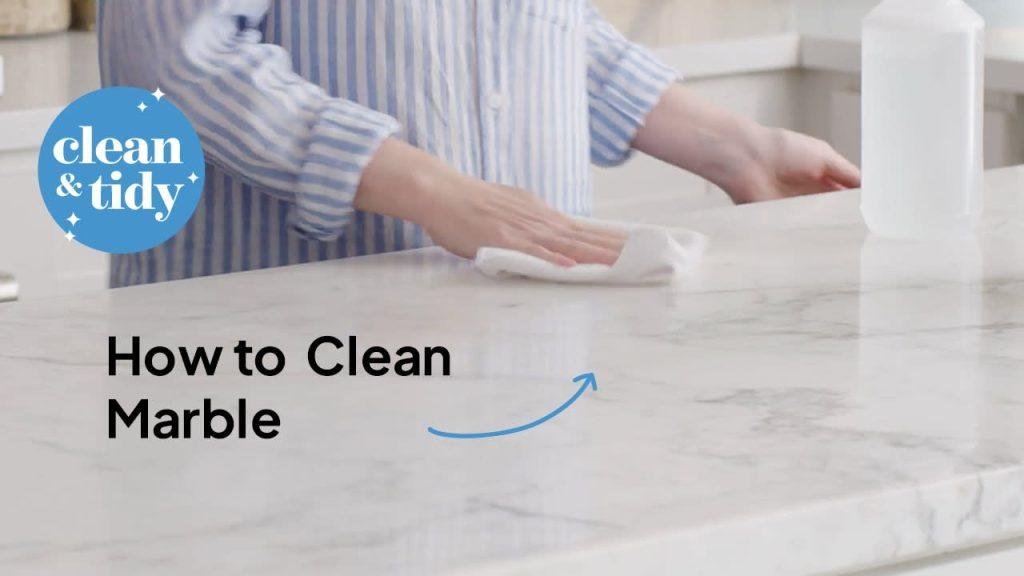Marble countertops are renowned for their timeless beauty and elegance, but if you’re considering them for your home, you might be wondering about their durability. While marble offers a sophisticated and luxurious look, it’s important to understand its resistance to scratches and etching. Unlike more resilient materials like granite or quartz, marble is relatively softer and more porous, which makes it susceptible to scratches and damage from acidic substances. In this guide, we will explore how to care for marble countertops to prevent and address scratches and etching, ensuring they maintain their stunning appearance for years to come along side with the help of Belair Marble and Granite.

Etching, caused by acids found in common kitchen items like citrus fruits and vinegar, can dull the surface and affect its pristine appearance. Regular sealing can help protect against such damage, but it’s essential to promptly clean any spills to prevent prolonged exposure. Additionally, using cutting boards and avoiding abrasive cleaners can further preserve the marble’s finish. During marble countertop installation, ensuring that the surface is properly sealed and that edges are finished with care can also contribute to the longevity of the marble. Knowing how to care for and maintain your marble countertops can help preserve their beauty while minimizing the risk of damage.
Understanding Marble’s Vulnerability to Scratches
Marble countertops, while elegant and luxurious, are relatively soft and porous compared to other materials like granite or quartz. This inherent softness makes them more susceptible to scratches from everyday use. Objects with hard or sharp edges, such as utensils or heavy cookware, can leave marks on the marble surface. Additionally, marble’s porous nature allows it to absorb substances, which can lead to discoloration and further visible damage. Understanding these vulnerabilities is crucial for homeowners to take proactive measures to protect their countertops. Regular maintenance and mindful usage are key to preserving the marble’s pristine appearance and extending its lifespan.
How Acids Cause Etching on Marble Countertops
Etching occurs when acidic substances, such as citrus juices, vinegar, or wine, come into contact with marble surfaces. Marble is composed primarily of calcium carbonate, which reacts chemically with acids, leading to a dull, cloudy appearance on the surface. This reaction, known as etching, results in a loss of the marble’s natural shine and can create noticeable marks. Unlike staining, which affects the color, etching alters the surface texture. Promptly cleaning up acidic spills and using coasters or cutting boards can help prevent etching. Understanding how acids impact marble helps in adopting practices that safeguard the countertop’s finish.
The Impact of Daily Kitchen Activities on Marble
Daily kitchen activities can significantly affect the condition of marble countertops. Tasks such as chopping, cooking, and handling acidic ingredients can contribute to wear and tear on the marble. For instance, cutting directly on the marble surface can cause scratches, while spills from acidic foods and beverages can lead to etching. Additionally, the heat from pots and pans can damage the marble if not properly protected. Being aware of how routine kitchen activities impact marble helps in implementing preventive measures. Using cutting boards, trivets, and cleaning up spills immediately can minimize the potential for damage.
Preventing Scratches: Best Practices for Marble Care
To prevent scratches on marble countertops, it’s important to follow some best practices for care. Always use cutting boards or mats to avoid direct contact between sharp objects and the marble surface. Avoid dragging heavy items across the countertop, as this can create scratches. Regularly clean the marble with a soft cloth and a pH-balanced cleaner to avoid abrasive cleaning agents that can damage the surface. Additionally, placing protective pads under objects like appliances and heavy cookware can help prevent scratches. By incorporating these practices into daily use, you can maintain the marble’s smooth and unblemished appearance.
Effective Methods for Cleaning Marble Countertops
Cleaning marble countertops effectively requires a gentle approach to maintain their beauty and prevent damage. Use a soft, lint-free cloth or sponge with a pH-balanced cleaner specifically formulated for marble. Avoid acidic or abrasive cleaners, as they can damage the marble’s surface. For spills, clean them up promptly to prevent absorption and staining. Regularly dust the surface to remove loose debris that could scratch the marble. Additionally, periodic deep cleaning with a marble-safe cleaner and conditioner can help preserve the marble’s luster. Following these methods ensures that your marble countertops remain clean and visually appealing.

How to Address Etching and Restore Marble’s Shine
Addressing etching on marble countertops involves using specialized products and techniques to restore the surface. Start by cleaning the etched area with a mild, non-abrasive cleaner to remove any residue. Next, use a marble polishing compound or an etch remover designed specifically for marble to gently buff the affected area. For deeper etching, professional marble restoration services may be required. Regular sealing can also help protect against future etching. Restoring marble’s shine involves careful handling and maintenance to prevent further damage. With the right approach, you can bring back the marble’s original luster and appearance.
Importance of Regular Sealing for Marble Countertops
Regular sealing is essential for maintaining the beauty and durability of marble countertops. Marble is a porous material that can absorb liquids, leading to potential staining and damage. Applying a high-quality sealant helps create a protective barrier that prevents moisture and spills from penetrating the surface. Sealing should be done every 6-12 months, depending on the level of use and the type of sealant used. This routine maintenance step is crucial for preserving the marble’s appearance and extending its lifespan. By keeping up with regular sealing, you can ensure your marble countertops remain in excellent condition.
Choosing the Right Marble Finish to Minimize Damage
The finish of marble countertops can influence their susceptibility to scratches and etching. Polished finishes, while glossy and reflective, can show etching more prominently than honed or leathered finishes. A honed finish provides a matte surface that is less likely to reveal scratches and etching, making it a practical choice for high-traffic areas. Leathered finishes offer a textured surface that can also reduce the visibility of damage while adding a unique look. Choosing the right finish based on your needs and maintenance preferences can help minimize damage and maintain the marble’s aesthetic appeal.
Avoiding Common Mistakes with Marble Countertops
Avoiding common mistakes with marble countertops is crucial for maintaining their appearance and functionality. One common mistake is using acidic or abrasive cleaners, which can damage the marble’s surface. Another mistake is neglecting to clean up spills immediately, allowing acids or liquids to penetrate and cause staining or etching. Additionally, failing to use cutting boards or trivets can lead to scratches and heat damage. By being aware of these common pitfalls and taking preventive measures, such as using appropriate cleaning products and protective accessories, you can keep your marble countertops looking beautiful and functioning well.
Tips for Protecting Marble Countertops During Installation
Protecting marble countertops during installation is key to ensuring a flawless finish and avoiding damage. Start by handling the marble slabs with care, using appropriate equipment to prevent chipping or scratching. Ensure that the installation surface is properly prepared and level to avoid issues with alignment and stability. Use protective coverings to shield the marble from dust, debris, and potential damage during the installation process. Additionally, verify that the marble is adequately sealed before and after installation to protect against future stains and damage. Following these tips helps achieve a successful installation and preserves the marble’s quality and appearance.
Long-Term Maintenance Strategies for Marble Surfaces
Long-term maintenance of marble surfaces involves a combination of regular care and preventive measures to keep the stone in top condition. Implement a routine cleaning schedule using pH-balanced cleaners and soft cloths to avoid damaging the surface. Regularly check for and address any signs of etching or staining, using appropriate restoration techniques as needed. Apply a high-quality sealant every 6-12 months to protect against moisture and spills. Additionally, avoid placing hot pots directly on the marble and use cutting boards to prevent scratches. By following these maintenance strategies, you can ensure that your marble surfaces remain beautiful and functional over the long term.
Conclusion
Maintaining marble countertops involves understanding their susceptibility to scratches and etching while adopting practices to preserve their elegance. Regular sealing, careful cleaning, and mindful usage are crucial to prevent damage and extend the lifespan of marble surfaces. Choosing the right finish and avoiding common pitfalls, such as using acidic cleaners or neglecting immediate spill cleanup, can significantly impact the marble’s durability and appearance. By implementing proper installation techniques and ongoing maintenance strategies, you can ensure that your marble countertops continue to enhance your space with their timeless beauty. With proactive care and attention, your marble countertops can remain a stunning and functional feature in your home for years to come.
FAQs
How can I prevent scratches on my marble countertops?
Use cutting boards and avoid dragging heavy or sharp objects across the surface. Regularly clean with a soft cloth and pH-balanced cleaner.
2. What causes etching on marble countertops?
Etching is caused by acidic substances like citrus juices or vinegar reacting with the marble’s calcium carbonate. Clean spills promptly to prevent etching.
3. How often should I seal my marble countertops?
Marble countertops should be sealed every 6-12 months, depending on usage and the type of sealant. Regular sealing helps protect against stains and moisture.
4. Can I restore the shine to etched marble surfaces?
Yes, use a marble polishing compound or etch remover to gently buff the affected area. For severe etching, professional restoration may be necessary.
5. What should I avoid to maintain my marble countertops?
Avoid using acidic or abrasive cleaners and placing hot pots directly on the surface. Use trivets and cutting boards to prevent damage.





